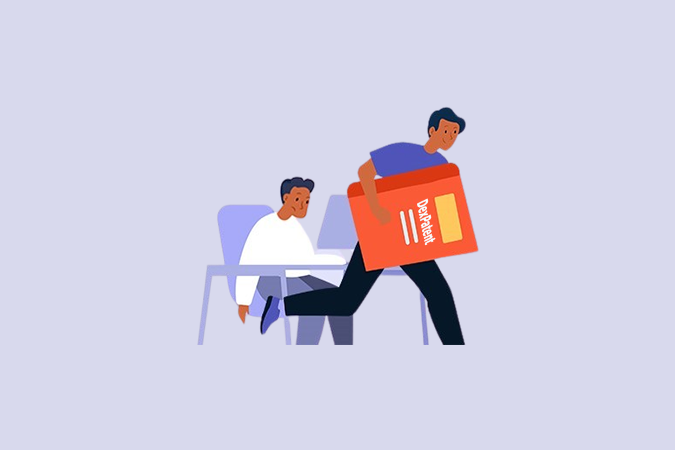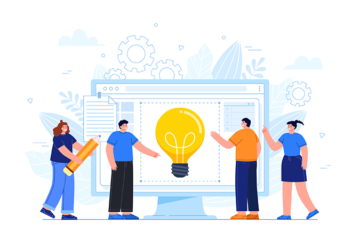A Beginner’s Guide to Copyrights in India – Understanding Legal Protection

In the digital world that we live in, literary and artistic works done by creators around the world are easily misused than ever before, because of the easy access to materials on the internet. So, how do you prevent this unauthorized access and maximize the fruits of your skill and investment?
To prevent the unwanted issues and unfair usage of the creator’s intellectual work, the creator can get copyright for his work.
What is a Copyright?

Copyright is a type of legal protection given for a creator for his/her creative work relating to literary, dramatic, musical and artistic works. Well known example for copyright protection is book. Similarly, blogs / other posts can also be protected under copyrights. There are other contents such as e-books, films, music, videos, software, podcasts and photos that can also be protected under copyrights.
Obviously, copyright does protect the selection and arrangement of ideas, i.e., their original and creative expression, as soon as they are fixed in some tangible form and it does not protect ideas or facts themselves.
Criteria for obtaining copyright
In order to qualify for copyright protection, a work should satisfy the following criteria:
- should be original, i.e., it should be the result of an author’s own intellectual creation;
- should exist in some physical form (this requirement is only applicable in some Member States as it is subject to National laws)
Originality:

The work that needs to be copyrighted must be original i.e., it does not mean it should be novel or unique but it must not be a mere or slavish copy of another work. The creation must be the product of the creator’s efforts and skill.
Fixation:

The creation must be in some tangible medium of expression or in the material form (whether it is written, recorded such as in musical or dance notation, filmed, painted, etc.) Although there are benefits to officially registering your work with the copyright office, the copyright protection is automatic. Copyright protection is (now) immediate, as soon as the expression is fixed in tangible form. That is, it applies to draft and completed work, both published and unpublished.
Based on this approach, even the accounting forms, football coupons and racing programs are also considered as literary works that are eligible for copyright protection.
Another important point is that neither quality nor uniqueness nor aesthetic appearance required for obtaining a copyright protection. For example,
- simple works are subject to copyright protection
- works that are similar, but independently created, are individually subject to copyright protection
Minimal Creativity:
The work which needs to be copyrighted can be simple / may involve minimal creativity and need not involve a lot of creativity.
Below are few examples among them:
- A sheet of instructions for assembling a toy from its parts may be subject to copyright
- A categorized yellow pages directory may be subject to copyright
- A website that provides the means for searching white pages database may be subject to copyright
What types of work are eligible for Copyright?
All literary and artistic works can be protected under copyright and would cover the following:
- literary works such as novels, books, poems, plays, reference works, newspaper articles;
- computer programs, databases;
- films, advertisements, movies, music, musical compositions, and choreography;
- artistic works such as paintings, drawings, photographs, and sculpture;
- architecture; and
- maps and technical drawings.
How long is copyright valid?

Generally, copyrights are valid till the lifetime of an author and also extended for a certain period after the lifetime of the author. The extension period varies for each territory. Example, in US, extension period is around 70 years after the lifetime of the author. In India, the extension period is around 60 years after the lifetime of the author. Also, the validity of copyrights depends on the type of work which is protected and the territory.
Steps for obtaining Copyright in India
Step 1: Filing
- The author of a work, copyright claimant, owner of an exclusive right for the work or an authorized agent can either file an application physically in the copyright office or file through speed/registered post or through e-filing facility available on the official website. For e-filing details, click here
- For registration of each work, a separate application must be filed along with the particulars of the work
- Along with application, the requisite fee must also be given. The fees vary for each type of work. It can be paid through demand draft (DD) or Indian postal order (IPO) addressed to the Registrar of Copyright Payable at New Delhi or through e-payment facility. For example, the fees for registration of literary, dramatic, musical or artistic work range from Rs 500 to Rs 2000. It also depends on the type of work for which you are applying for copyright. For more details relating to fees
- After completing payment, registrar issues a dairy number to the applicant
Step 2: Examination
- Once the dairy number is issued, there is a minimum of 30 days waiting period and in this period copyright examiner reviews the application
step 3: Registration
- In this step, the registrar might ask for more documents. Once completely satisfied with the copyright claim made by the applicant, the registrar of copyrights enter the details of the copyright into the register of copyrights and issues a certificate of registration
- The process of registration of copyright completes when the applicant is issued with the Extracts of the Register of Copyrights (ROC)
Joint and collective ownership
- Work of joint authorship is established only when the work is produced by the collaboration of two or more authors
- Also, the contribution of one author is not distinct from contribution of others
How to earn from Copyrights?
Licensing
- Owner of a copyright can either license the entire copyright or the license may be confined to one or more interest in the copyright
- The copyright may be licensed to more than one person non-exclusively
- A license does not result in change of ownership in a work and requires to be in writing along with the details of work, territory and term
- If term is not specified, then it is presumed to be five years. Similarly, if the territory is not specified, then it is restricted to India.
While considering to obtain copyright for a work, we need to keep in mind that, copyright laws are territorial. In other words, they apply within the country in which they are passed/registered. As such, if you wish to protect your work internationally, you must make sure that you comply with the relevant legal requirements in the countries in which you wish your work is to be protected.
When does the copyright infringement occurs?
Copyright infringement has become a serious issue in the modern world. Infringement occurs when a person intentionally or unintentionally copies the work of another creator. The following are the copyrights infringement scenarios:
- unauthorized use of the copyright, be it the whole or a part of the copyrighted work;
- allowing a place to be used on a profit basis; and
- displaying or exhibiting in public or distributing for the purpose of trade or importing copyrighted work.
How may copyright infringement be prevented?
There is no perfect degree of vigilance that can guarantee an ‘infringe-free’ environment, but we can certainly deterrent measures to adhere to the copyright owners, for instance such as:
- instances of documentation use;
- registration of copyright;
- proper notice of copyright;
- monitoring the activities of habitual infringers;
- making independent contractors and employees subject to confidentiality;
- having proper licensing agreements incorporating a proper control mechanism; and
- publicizing a successful infringement trial (if resources allow).
Remedies against Infringement
There are three kinds of remedies against copyright infringement, which are listed below
-
1. Civil remedies
In copyrights, civil remedies are available for injunction damages or account of profit, delivery of infringing copy and damages for conversion.
-
Criminal remedies
Criminal remedies are available for imprisonment of the accused or imposition of fine or both. Also, remedy is available for seizure of infringing copies.
-
Administrative remedies
There are administrative remedies in copyrights consist of moving the Registrar of copyrights to ban the import of infringing copies into India. This is done when the infringement is by way of such importation and the delivery of the confiscated infringing copies to the owner of the copyright and seeking the delivery.
Jurisdiction of Courts
A suit or other civil proceedings relating to infringement of copyright is filed in the District Court or High Court within whose jurisdiction the plaintiff resides or carries on business or where the cause of action arose irrespective of the place of residence or place of business of the defendant.
Limitation
The period of limitation for filing the suit is three years from the date of infringement.
Here’s few interesting case studies on copyright.
Vanilla Ice vs. David Bowie & Freddie Mercury:
This case deals with copyrights in the field of music. The song ‘Ice Ice Baby’ by Vanilla Ice used a melody which belongs to the song ‘Under Pressure’ by David Bowie/Queen. This led to a case in which Vanilla Ice did admit to using the same melody even though initially it denied. The case was settled privately in which Vanilla Ice ended up paying certain sum of money and credited Bowie/Queen on the track.
Zee Entertainment Enterprises Ltd vs Saregama India Ltd:
One of the recent infringement cases is between Zee Entertainment Enterprises Ltd and Saregama India Ltd. Zee has filed a case against Saregama for allegedly exploiting the Zee’s copyright over songs from 29 movies and also playing the songs and allowing the internet users to download the songs. Saregama (the Defendant), as per their reply to the legal notice preceding the suit, claims that the assignment of copyright by the producers of the movies (in question) in the year 1981. During 1981, the medium of recording was only in the form of LPs (long playing vinyl record or phonograph). The Delhi High Court asked Saregama to deposit Rs. 20 lakh subject to which, the Defendant, shall, till the further date of hearing be entitled to stream the said music on its website and to permit download of songs were being done but shall not be entitled to grant any new or fresh licences with respect to the said works. The Court listed the matter for further consideration for Jan 24, 2017.












0 Comments